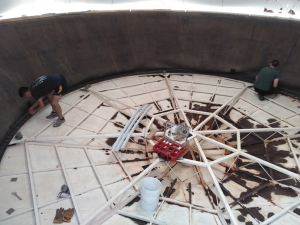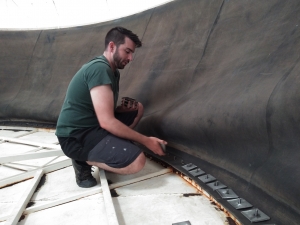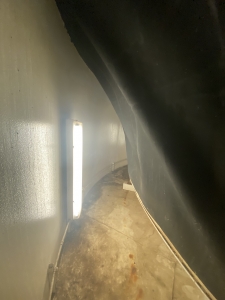
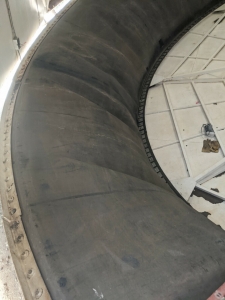
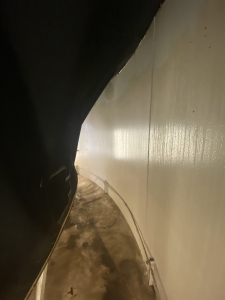
The Test Module lung was developed as a “method of managing the effects an internal temperature and external barometric pressure change could cause in a fixed, sealed, glass structure. This problem was solved with a variable volume system joined to the module by an air duct. With increased temperature or decreased barometric pressure in the Test Module compared to the out- side environment, the variable chamber expands; with a decrease in temperature or a increase in pressure, the chamber contracts. The lung structure provides an effective means to prevent the possibility that the Test Module would implode or explode when subjected to these forces. The reservoir of air provided an increased buffering; adding approximately 20-40% to the total atmospheric volume. The weight of the pan on the lung structure insured a positive displacement from inside the closed system to the outside.” — Abigail Alling, Linda Leigh, Taber MacCallum, and Norberto Alvarez-Romo. Biosphere 2 test module experimentation program. Biological Life Support Systems 23 (1990): 32.
The “lung” is a pressure regulation and air storage system first tested 33 years ago as part of the Test Module program. It was then improved upon and scaled to a much larger volume for the Biosphere 2 proper. Today Trent Tresch and volunteer Rob Ronci of Colorado were successful in conducting a dry run inflation of the refurbished Test Module lung.
With the lower lung door only partially sealed, the electrical sub-panel ports not yet complete, and one known leak in the Test Module space frame structure, the lung membrane inflated and rose to an inverted position in just a few minutes of running the inflation fan.
This bodes well for what we believe will be a fully functional test of the lung early next week.


